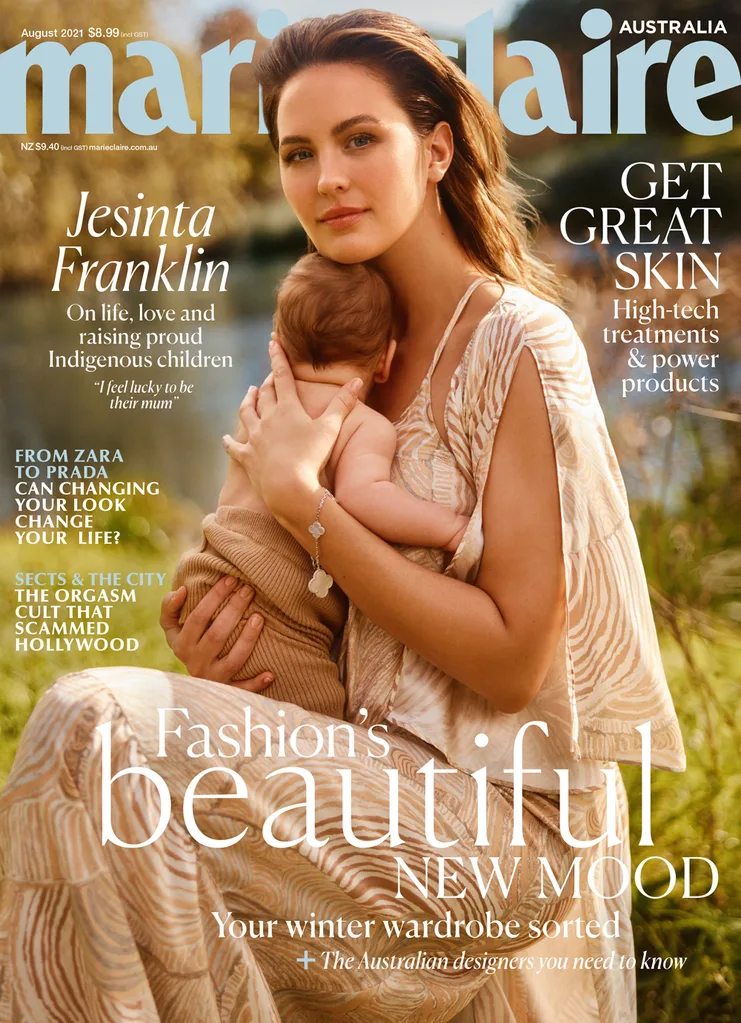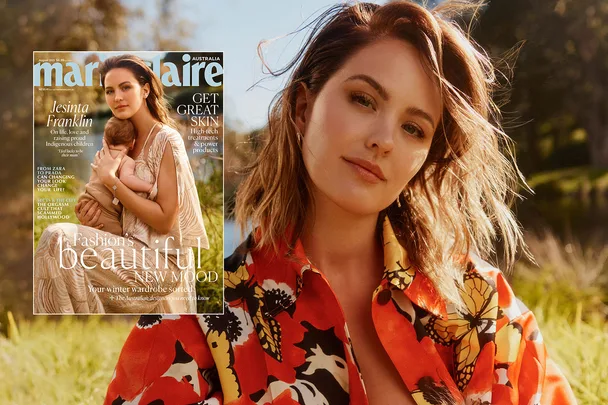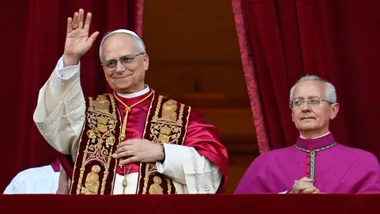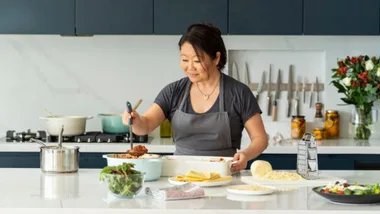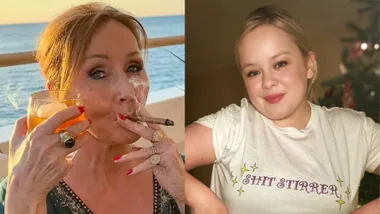The tiny wheatbelt town of Dowerin is tucked up in the bottom corner of Western Australia, 160 kilometres north-east of Perth. There’s a pub on one end of the main street and a bakery at the other. The main attraction is Rusty the Tin Dog, a 2.7-metre-tall steel kelpie that stands guard at the town entrance. It’s thought that the community was named after Lake Dowerin from the Aboriginal word dower, meaning “place of the throwing sticks”.
It’s here where AFL great and Noongar man Lance “Buddy” Franklin, 34, grew up on a farm on the out – skirts of town, kicking a footy at the goalposts painted on his family’s tin shearing shed. And it’s here where Lance and Jesinta Franklin will take their children, Tullulah “Lulu”, 17 months, and Rocky, four months, for a Welcome to Country ceremony later in the year.
“I’ve never been [to Lance’s home town]. This year we’re spending Christmas in Western Australia, so we’ll take the kids to Dowerin to show them the farm where Bud grew up and the bus stop where he would wait for the local school bus,” says Jesinta. She’s speaking from her Sydney home while breastfeeding her son and gently rocking him to sleep. “For the children’s Welcome to Country and naming ceremony, we’ll bury their umbilical cords to connect their spirit to the earth. I think it will be really special – and probably very emotional.”
Dowerin is a long way from where Jesinta grew up on Queensland’s Gold Coast, with its skyscrapers, sandy beaches and shopping centres. It’s worlds apart from the Miss Universe stage in Las Vegas, where Jesinta represented Australia and kicked off her illustrious modelling career in 2010. And it’s on the opposite side of the country to Sydney’s Centennial Park, where just days earlier Jesinta cuddled her son while wearing a dress and robe by Indigenous design house MAARA Collective for her marie claire cover shoot.
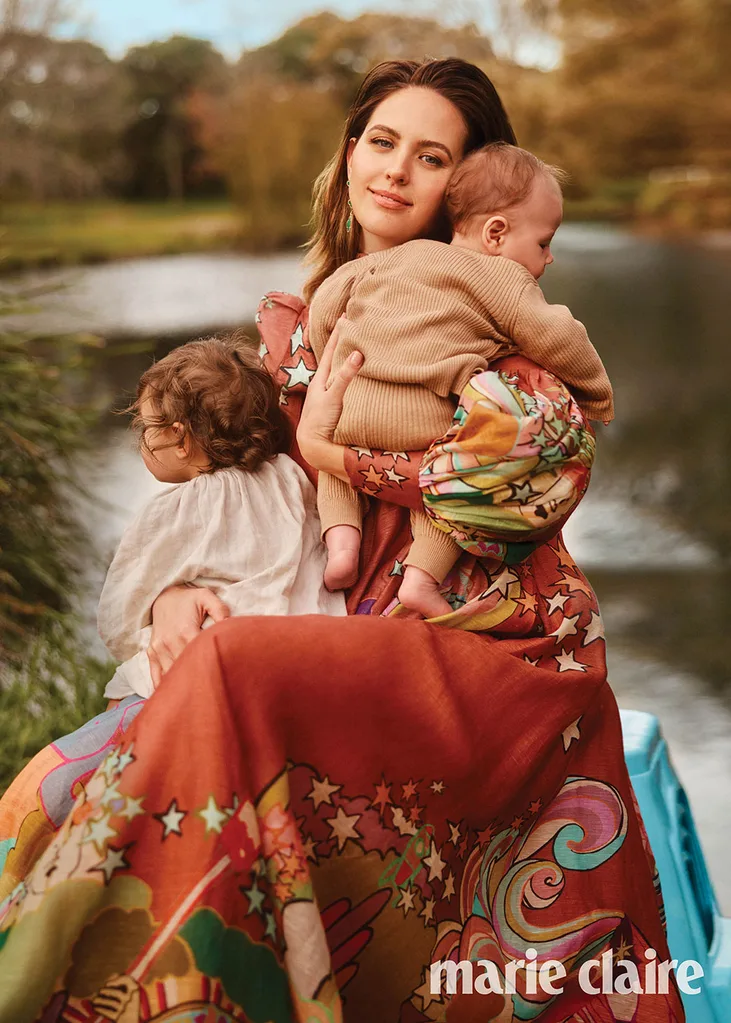
Jesinta, who is turning 30 next month, is acutely aware of her white privilege. “I’ve never been judged for the colour of my skin, my culture, where I was born or who my parents are. It’s not my lived experi – ence, but it is Buddy’s and his mum’s and sisters’,” she admits, adding that she’s taking their lead when it comes to teaching her kids about Australia’s shameful history and the issues Indigenous people still face.
“Obviously, I’m guided by Buddy, but I’ve also taken the initiative to educate myself so I can be the best mum to our First Nations babies and the best ally I can be,” reveals the model turned entrepreneur. “I feel like I have a big responsibility to ensure my kids can connect to culture and can continue to share their history and be the storytellers for the next generation.”
The road isn’t always smooth; it’s a backstreet with potholes, steep hills and Wrong Way, Go Back signs. Jesinta admits she’s made mistakes on her journey – in the past, she’s attended Australia Day parties and didn’t know it was offensive to call someone “half” or “a quarter” Indigenous. “I know I’m not always going to say the right thing, but we can’t let the fear of asking the wrong questions stop us from having conversations,” she says, acknowledging that she seeks guidance from Indigenous community members before speaking out on issues. “If you get something wrong, admit it, apologise and actively do better.”
Since she started dating Lance in 2012, Jesinta has seen first-hand the ugly reality of this country’s racism, discrimination and unconscious bias. “I realised racism was still a very real issue in Australia when I posted a photo of Buddy on Instagram and had to remove it because of the racist comments,” she told marie claire in 2019 while campaigning for Indigenous constitutional recognition for her then-unborn daughter – and all First Nations people.
In a 2020 column about Invasion Day, Jesinta opened up about the “raw and deeply painful” conversations she’s had with Lance’s family, saying, “I have seen my husband well up when talking about his mum and how she used to have to run away with her siblings when they knew the government trucks were coming to take them away from their parents. Or when his sisters have shared stories of their grandparents, who were born into a world that considered them flora and fauna.”
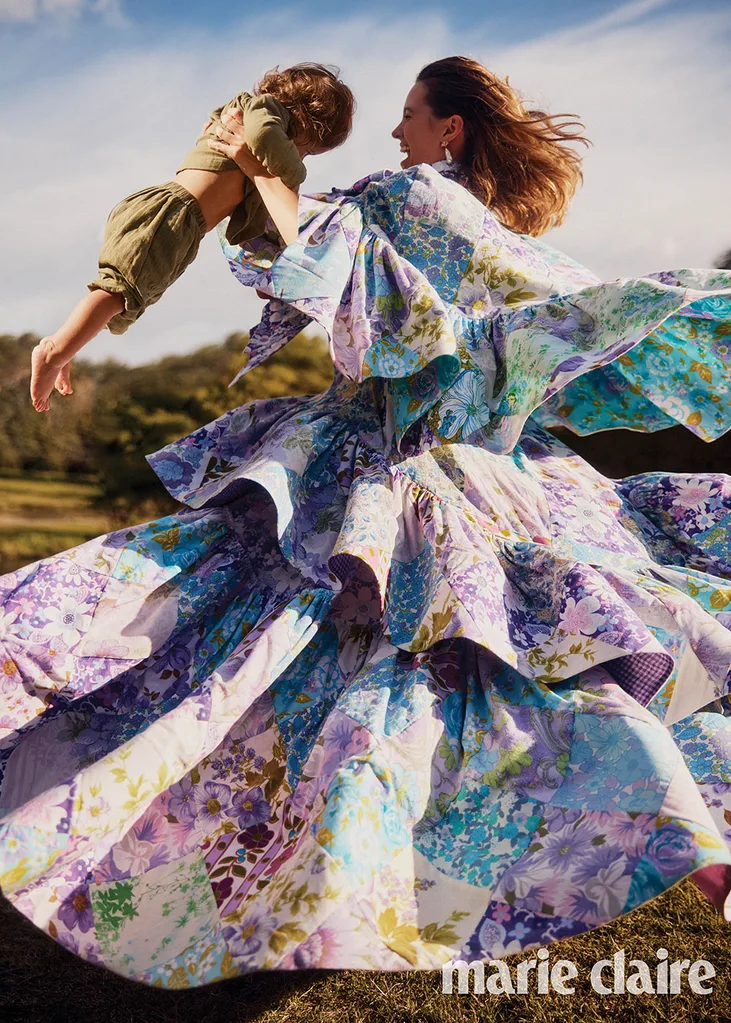
There’s a long way to go. In Australia, the life expectancy of Indigenous people is on average eight years less than non-Indigenous people. Indigenous youth have among the highest suicide rates in the world, and they are about 10 times more likely to be removed from their families than non-Indigenous children. An 18-year-old Indigenous man is more likely to go to jail than university. In fact, Indigenous people in Australia are imprisoned at the highest rate of any people in the world.
Not wanting to speak for Indigenous people or talk over their voices – but wanting to use her platform to raise awareness and call for action – Jesinta says the age of incarceration is one of the country’s biggest issues. At present, kids as young as 10 are being thrown behind bars, despite the 2017 Royal Commission’s finding that detention should be a last resort for children and the Human Rights Commission advising that the age of criminal liability be raised to 14.
“It’s not humane what we are doing here. As a nation, we need to do better to stop the cycle of incarceration. Research shows if you enter the system as a child, you will likely enter it again as an adult. So imprisoning kids is devastating,” explains Jesinta. “We’ve said sorry, but now we need to back it up with action: by changing the legal system, updating the constitution to recognise First Nations people and working towards real reconciliation. I’m not sure if reconciliation can be achieved, but to move forward, we need to commit to healing.”
That’s the future Jesinta wants for her kids: one where they’re not judged – or more likely to go to jail – because of the colour of their skin. “I hope that the future is bright for them, that they can be themselves truly and fully, and that they’re kind to others,” she says, pausing for thought. “Honestly, I just hope they turn out OK, given how many nights we have toast with cheese on it for dinner.”
For the full cover story, pick up the August issue of marie claire, on stands now.
